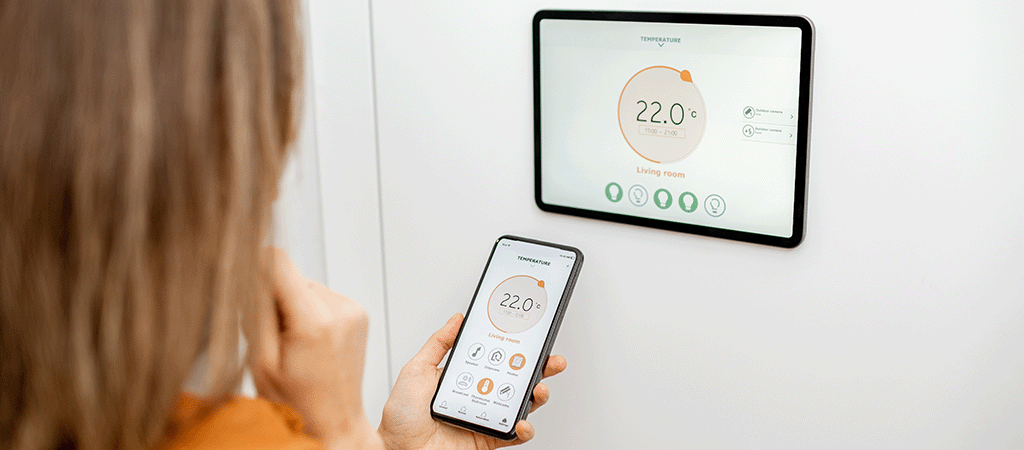
Insights
What broadband do I need for a smart home?
Smart homes are becoming increasingly popular as technology advances and people seek more convenience, efficiency, and control over their living spaces. A smart home refers to a residence equipped with devices and systems that can be remotely controlled and automated.
From smart thermostats and lighting to security cameras and voice assistants, these interconnected devices offer a seamless and personalised experience. The ability to monitor and manage various aspects of a home remotely has transformed the way we live. Here, we will delve into the intricacies of broadband requirements for smart homes:
Adequate Bandwidth
Smart home devices consume varying amounts of bandwidth. Streaming devices, such as smart TVs and media players, require high bandwidth for smooth playback of high-definition content. Video doorbells and security cameras also demand sufficient bandwidth to transmit real-time video footage.
To determine the required bandwidth, consider the number of devices and the activities they will be performing simultaneously. It’s advisable to opt for higher speeds to accommodate potential future expansions or increased device usage.

Speed and Reliability
Opt for an internet service provider (ISP) that offers reliable and high-speed connections. Fibre optic or cable internet connections are preferable for smart homes as they typically provide faster speeds and lower latency compared to DSL connections. Higher speeds ensure seamless streaming, quick response times for smart devices, and efficient data transfer between devices.
Stable Connection
Look for an ISP known for providing a stable and consistent connection. Smart home devices rely on a reliable internet connection for seamless automation, remote access, and integration. Avoid ISPs with frequent outages or poor customer reviews regarding connection stability.
By considering these factors, you can select an internet connection that meets the bandwidth needs of your smart home, delivers reliable and fast speeds, accommodates data requirements, and ensures a secure environment for your connected devices.
Importance of reliable broadband for smart homes
Reliable broadband is the backbone of a successful smart home. As smart devices rely on internet connectivity to communicate and function, a stable and fast broadband connection is crucial. Without a dependable internet connection, the full potential of smart home technology cannot be realised.
From streaming high-definition content to controlling smart devices remotely, a reliable broadband connection ensures smooth operation and minimises frustrating interruptions. It enables seamless integration and synchronisation of various smart devices, creating a cohesive and efficient smart home ecosystem. In essence, reliable broadband is the lifeline that connects and empowers the diverse range of smart devices within a home.

What type of broadband connection is best for smart homes?
The ideal broadband speeds for a smart home vary, but a minimum download speed of 25 Mbps is suitable for basic activities. For a more robust setup with multiple devices and HD streaming, aim for 100 Mbps or higher. Upload speeds of at least 10 Mbps are recommended for video conferencing and security cameras. Low latency, below 50 ms, is crucial for responsive automation and device control.
When it comes to powering your smart home with a reliable internet connection, understanding the types of broadband options available is essential.
Fibre optic broadband
Fibre optic broadband stands at the forefront of internet technology, offering unparalleled speed, reliability, and future-proof connectivity. This broadband connection delivers ultra-fast speeds, making it ideal for bandwidth-intensive smart home applications like 4K video streaming, online gaming, and large-scale device integration. With fibre optic broadband, you can enjoy a lag-free experience, seamless device communication, and swift data transfers.
Cable broadband
Cable connections provide high-speed internet access and widespread availability in many areas. They offer robust performance for smart homes, allowing you to stream content, control devices, and enjoy reliable connectivity across multiple devices simultaneously. Cable broadband is particularly suitable for households with numerous smart devices or those located in areas where fibre optic connections are not yet available.
DSL (Digital Subscriber Line) broadband
Often delivered through telephone lines, DSL is another option for smart homes. While DSL speeds may be slower compared to fibre optic and cable connections, they can still provide suitable performance for basic smart home needs. DSL connections are widely accessible and can be a viable choice in areas where other broadband options are limited.
Security for smart home networks
As smart homes rely on internet connectivity, ensuring the security of the network is paramount. Smart home devices are potential targets for hackers seeking to gain unauthorised access to personal data or control over the devices.
To protect a smart home network, it is crucial to follow best security practices, such as using strong and unique passwords, regularly updating device firmware, and implementing network encryption protocols like WPA2 or WPA3. Installing a robust firewall and enabling two-factor authentication adds an extra layer of security.

The future of broadband technology for smart homes
The future of broadband technology holds exciting possibilities for smart homes. One significant trend is the expansion of 5G networks, which promise faster speeds, lower latency, and increased network capacity.
5G will facilitate the growth of smart home devices, enabling seamless integration and real-time connectivity. Moreover, advancements in Wi-Fi standards, such as Wi-Fi 6 and upcoming Wi-Fi 6E, offer improved performance, increased device capacity, and reduced interference, enhancing the smart home experience.
Mesh networking, which creates a network of interconnected devices, will gain popularity, ensuring broader coverage and eliminating dead zones in large homes. Additionally, developments in artificial intelligence and machine learning will enhance the capabilities of smart home devices, allowing for more personalised and intuitive automation.
Connect your smart home with Jurassic Fibre
Ultrafast full fibre broadband brings numerous benefits to the local community in rural areas across the Southwest. With Fibre Broadband Exmouth, residents are enjoying enhanced connectivity, enabling them to effortlessly stream high-definition content, engage in video conferences, and access online educational resources. This newfound accessibility also opens up opportunities for remote work, reducing commuting times and contributing to a more sustainable environment. Ultrafast broadband also empowers local entrepreneurs and small businesses, allowing them to expand their reach, connect with customers worldwide, and drive economic growth within the community. If you’re looking for the best broadband packages for smart homes, browse our brilliant home broadband offers. Use our postcode checker today to see if you can get Jurassic Fibre broadband in your area.
Latest news
A network for the future
Why Jurassic Fibre?


